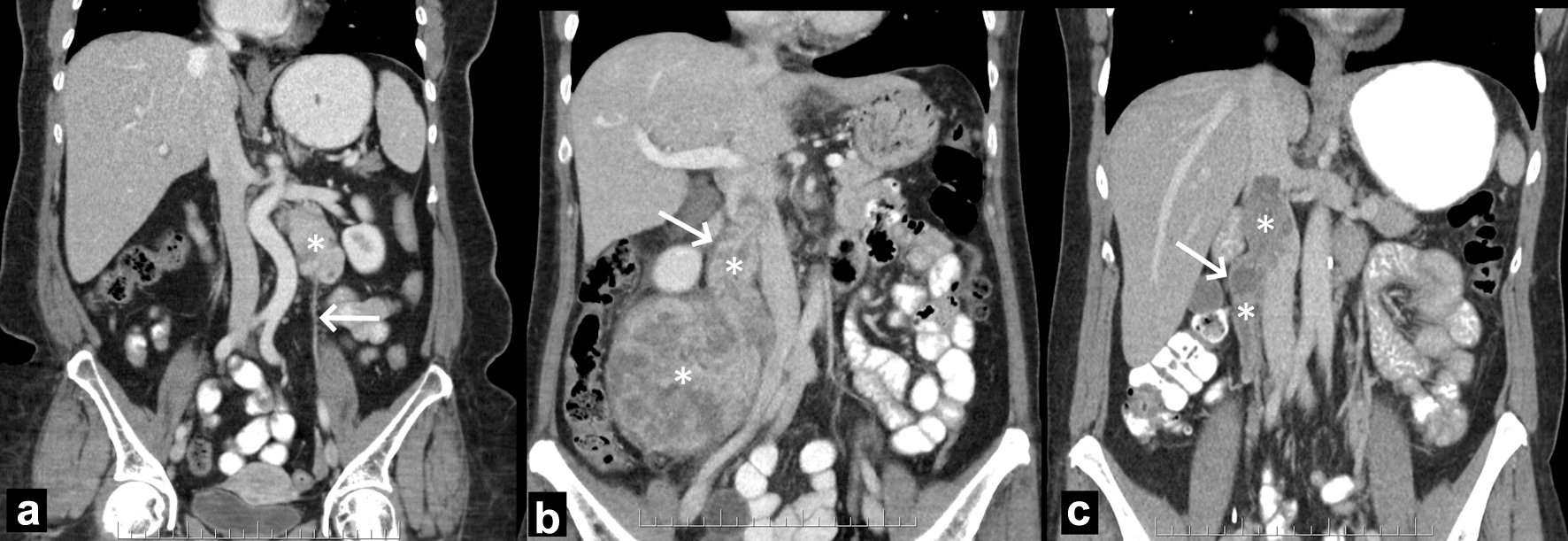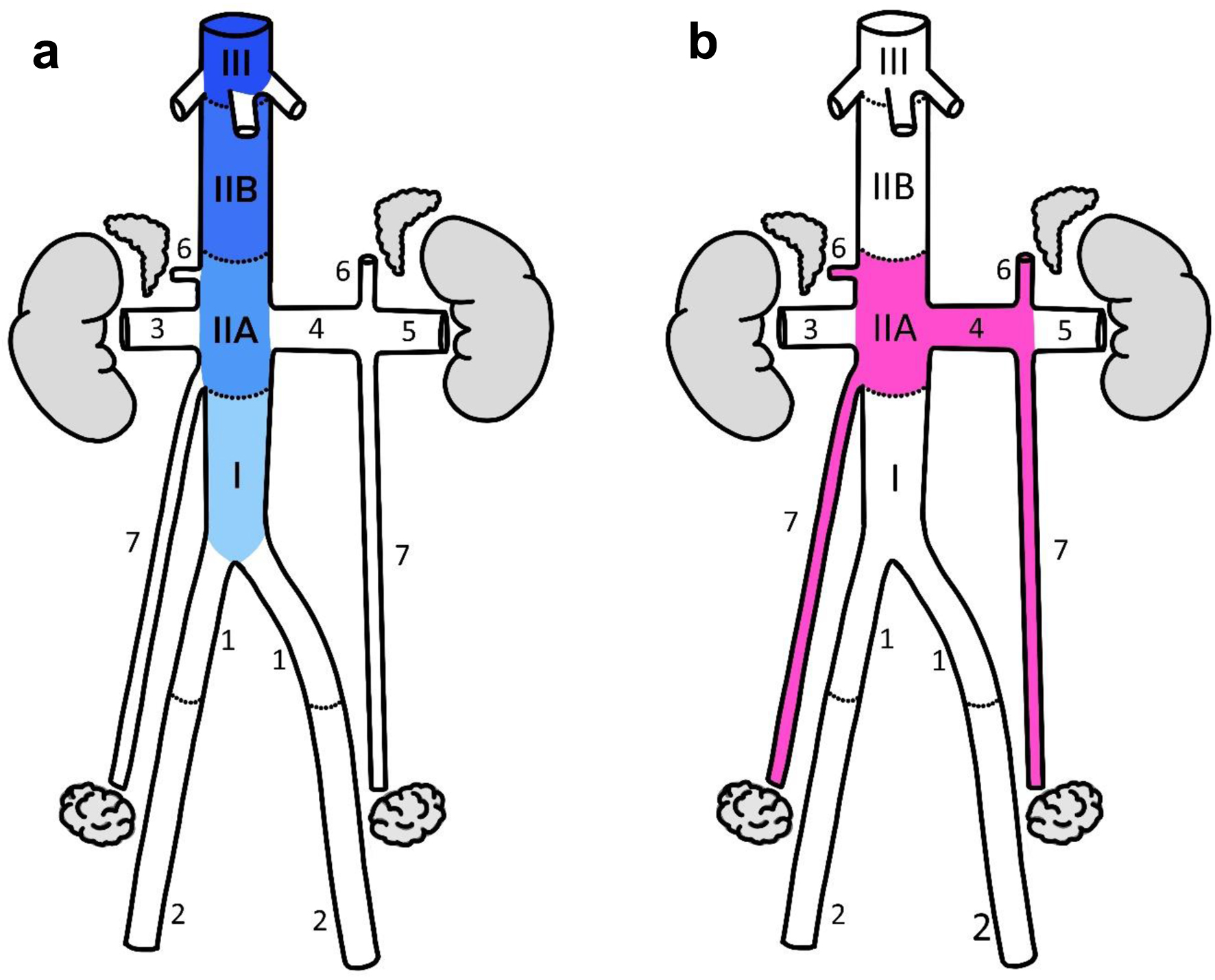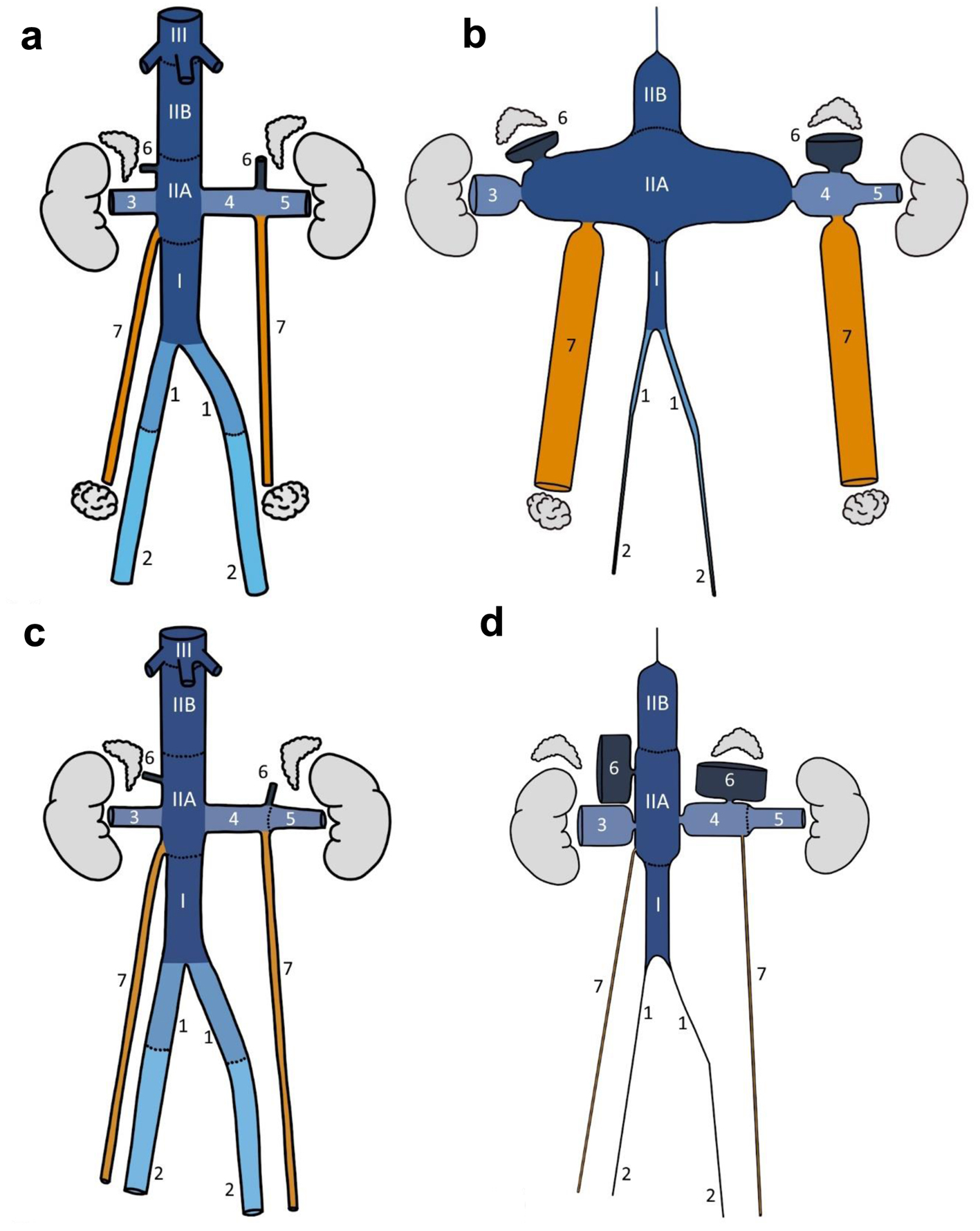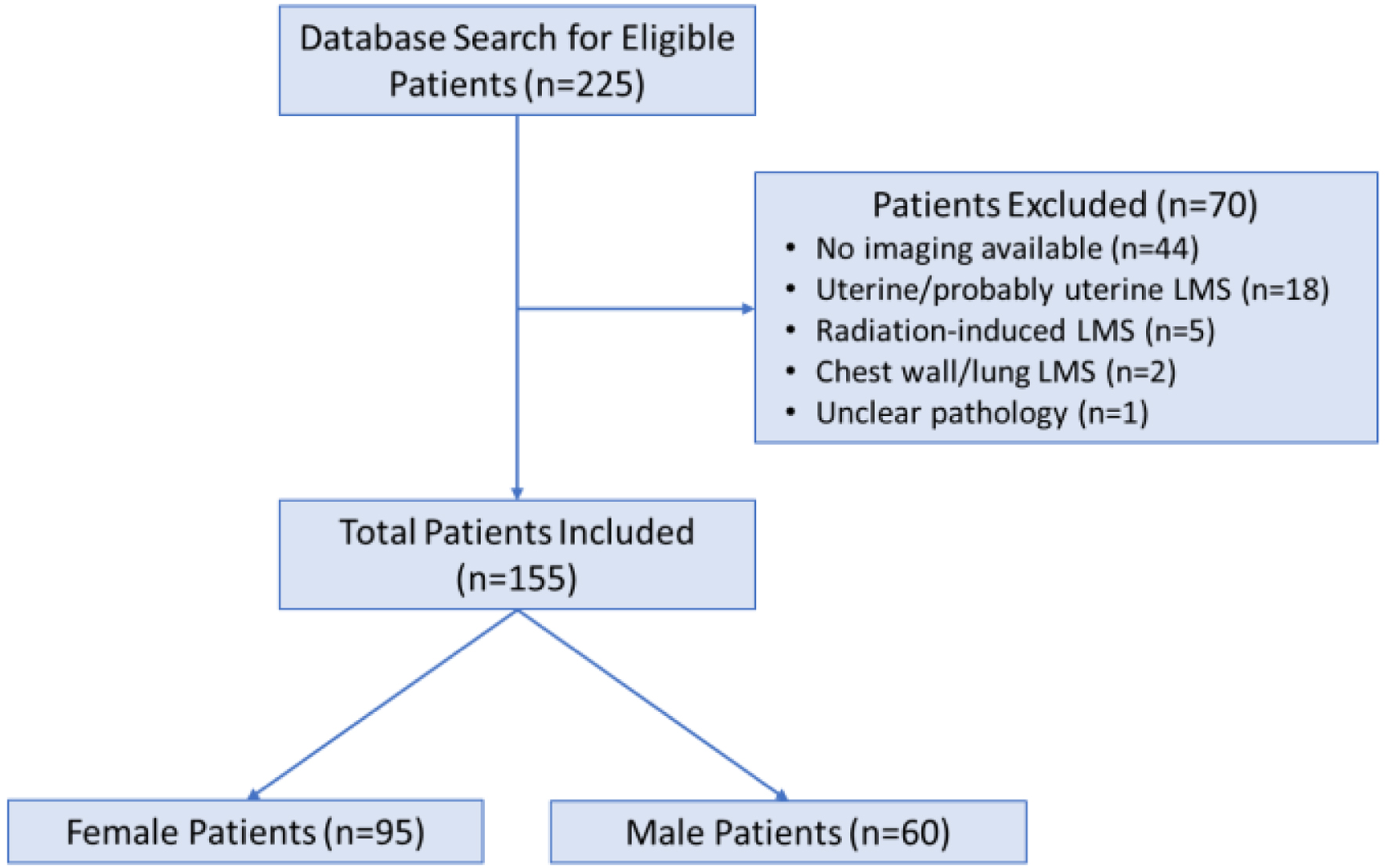
Figure 1. Illustration of designation of tumor origin in three different patients. (a) Left ovarian vein LMS. The left retroperitoneal tumor (asterisk) is located caudally to the left renal vein and laterally to the aorta. The left ovarian vein (arrow) extends into and from the tumor (not shown). (b) Right ovarian vein LMS. The right retroperitoneal tumor (asterisks) extends up the right ovarian vein (arrow) and into the IVC. (c) IVC IIA. The purely intravascular tumor (asterisks) lies within the right ovarian vein (arrow) and IVC, at and below the left renal vein. Because the tumor had a wider diameter in the IVC than in the ovarian vein, the former was designated as site of origin. IVC: inferior vena cava; LMS: leiomyosarcoma.

Figure 2. (a) IVC segments. The notation used is based on prior studies of IVC LMS with the following modifications: 1 - the cranial limit of IVC I was defined at the junction of the gonadal vein or either renal vein, whichever was more inferior; 2 - IVC II was divided into A and B segments with the hepatic margin as their boundary. (b) Sex-hormone drainage pathway (SHDP). The first and immediate second veins draining the hormone-producing organs were included as part of the drainage pathway. Anatomical annotations: I, IIA, IIB, III, IVC segments; 1 - common iliac vein, 2 - external iliac vein, 3 - right renal vein, 4 - medial left renal vein, 5 - lateral left renal vein, 6 - adrenal vein, 7 - ovarian vein. IVC: inferior vena cava; LMS: leiomyosarcoma.

Figure 4. Normal anatomy (a: female; c: male) and proportional topographical (b: female; d: male) diagrams of selected retroperitoneal veins. The normal vessel lengths and diameter were drawn based on averages from 10 female/male patients in the study cohort. Proportional topographical diagrams are distortions of the anatomy normalized to one variable. For example, the cortical sensory homunculus is a proportional topographical diagram of the body distorted based on the size of the brain cortex supplying the various anatomical regions. These venous proportional topographical diagrams were obtained by altering the vessel diameter based on incidence per mm2 and then normalized to IVC IIB segment. All altered vessels are therefore proportional to IVC IIB segment. Anatomical annotations: I, IIA, IIB, III, IVC segments; 1 - common iliac vein, 2 - external iliac vein, 3 - right renal vein, 4 - medial left renal vein, 5 - lateral left renal vein, 6 - adrenal vein, 7 - ovarian/testicular vein.



